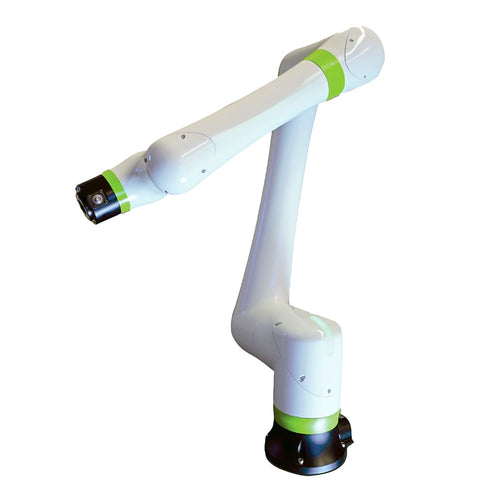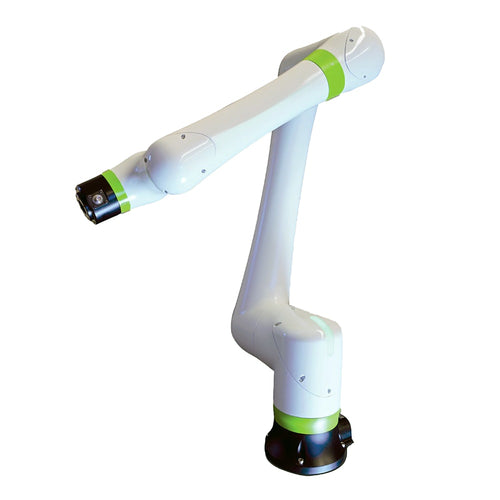May 20, 2025
Jump to:
- Manual vs. Automated Adhesive Dispensing
- Benefits of Automated Adhesive Dispensing
- Challenges of Automated Adhesives Dispensing
- When Should You Automate Adhesive Dispensing
- How to Automate Adhesive Dispensing
The automation of manufacturing is becoming more and more popular. For adapters, automation can be a distinct competitive advantage as it can improve efficiency and increase production.
Manual Vs. Automated Adhesive Dispensing
One such aspect of automation that is growing in popularity is with material, fluid, and adhesive dispensing applications. Automated dispensing involves the use of machines and robotic dispensing systems to apply adhesives, sealants, and other materials, instead of doing so manually. These systems can range from simple benchtop machines to large industrial pieces of equipment.
In contrast, manual adhesive dispensing techniques will rely heavily on humans using tools like brushes or dispensing guns. Because humans are in control in manual application techniques, there is a lot of room for human error. While manual dispensing techniques can be still be used for some applications, many businesses are turning to automating their adhesive dispensing systems instead.
Although automation is growing in popularity, you may not know how to get started or if automating your adhesive dispensing is even worth it. To help, our team shares the basics of automating your adhesive dispensing, including the benefits, downfalls, and some tips for implementation.
Benefits of Automated Adhesive Dispensing
To start, let's talk about the benefits of automating adhesive dispensing and why you may want to consider updating your manufacturing process.
More Consistency
Unlike manual dispensing techniques that can have variable results, automating your adhesive dispensing system can lead to better consistency and quality control. The systems will dispense the same amount of material every time. They can even dispense precise amounts of materials at high speeds for high-quality, repeatable results.
Better Efficiency
If you are looking to improve the efficiency of your manufacturing, then automated dispensing is almost certainly the way to go. Automated systems can work at higher speeds than manual systems and increase product output while remaining consistent.
Reduced Waste
Another pro of automated adhesive dispensing is reduced waste. When set up correctly, automated machines will dispense the right amount of the material needed every time. This consistency means less wasted adhesive from over-dispensing. On top of reducing the amount of wasted adhesive, automated systems may also be able to reduce the amount of wasted products. Human errors in manual dispensing can lead to faulty products that are unfit for the customer.
Improved Safety
The manufacturing floor can be a dangerous place. Some adhesives have chemicals or fumes that can be health hazards for humans. Some dispensing equipment can get extremely hot and lead to burns. Some dispensing tasks can also require workers to remain in awkward and strenuous positions. In these situations, an automated system can take over dangerous tasks to minimize safety hazards.
Less Reliance on Skilled Workers
If you are currently welding instead of using adhesives to bond your materials together, you may want to consider this switch sooner rather than later. Currently in the United States, 43.2% of welders are 45 or older. In contrast, only 9.4% of welders are 25 or younger.1 As many welders approach retirement age, there are not enough incoming welders to replace them. For businesses that rely on welders, this could be problematic. Instead of scrambling to find these skilled workers, using adhesives and automated dispensing systems could relieve this pressure.
Challenges of Automated Adhesive Dispensing
While there are so many advantages of automating your adhesive dispensing setup, it does come with its challenges. There are some potential hurdles you could encounter, especially if you choose a more complex system to begin.
Initial Investment
One of the biggest cons of automating adhesive dispensing systems is the initial investment. Upfront costs can include new equipment, integration, and training. While this is a big lift for companies at first, the long-term costs are usually well worth this investment.
Integration
Another potential downside of automating adhesive dispensing is integration. Ensuring that the new system is properly integrated into your workflow can take a lot of time and planning depending on the system. Not to mention the fact that you will likely experience downtime with the setup.
Training & Maintenance
While machines may be doing the actual dispensing, there will likely still be some amount of human involvement. Operators may need to learn new systems or undergo more training in order to properly run the system. On top of that, the equipment will likely require regular maintenance to run smoothly.
When Should You Automate Adhesive Dispensing?
The first question here is if your adhesive dispensing processes can be automated. But just because it can be automated, doesn't mean that it should be. In some cases, automation could lead to more trouble than it is worth.
You should consider automating your adhesive dispensing if:
-
Your production process requires repetition with high precision
-
You work with high volumes of materials and operate at high speeds
-
You want to increase your production speed and product output
-
You are working with two-component adhesives in large volumes
-
Your dispensing process involves complex shapes, patterns, and timing
-
Your dispensing process currently puts your workers' health at risk
-
Your dispensing setup is inconsistent and leads to wasted adhesive or final products
-
You are looking to grow the business or get a competitive edge
You may want to stay with manual adhesive dispensing if:
-
You only do a small amount of dispensing and use a very small amount of adhesive
-
You do not need to be precise with your dispensing application
-
You do not have the financial means to automate your dispensing at this point
How to Automate Adhesive Dispensing
Although there are many benefits of automating your adhesive dispensing, the initial leap can be intimidating. To help, our team is here to walk you through the basics of automating your adhesive dispensing, including tips to get you started and how to minimize potential downfalls.
1. Choose the Right Dispensing System
If you decide to automate, the next step is to decide the kind of automated adhesive dispensing system to use. When determining the right type of automated adhesive dispensing system for your needs, you should consider:
-
The material being dispensed
-
The production volume
-
The production speed
-
The precision required
-
The weight of the load
-
The initial cost
-
The space on the production floor
-
The amount of human interaction
Fully automated industrial robots and collaborative robots (cobots) are two popular options that both have their own pros and cons.
Read more about collaborative robots versus industrial robots.
2. Start with Cobots
If you are totally new to automation, a complete overhaul of your production line with large-scale industrial robots may not be the way to go. Instead, cobot dispensing and gluing systems provide an accessible entry point into automating your adhesive dispensing.
Cobots can:
-
Work safely alongside humans
-
Take up less space on the production floor
-
Are easier to integrate and more user-friendly for people without automation experience
-
Respond to hand-guided teaching to reduce the learning curve for new operators
-
Can transition and be used for different tasks when needed
-
Are more affordable than industrial robots
3. Plan Ahead
Integration is much easier with cobots than industrial robots, but they still require time to set them up correctly. Regardless of what type of adhesive dispensing automation you decide to implement, you will need to plan ahead. Working with a professional dispensing systems integrator can ensure that you find the most efficient solution for your needs, and you can implement these changes in a timely manner. You will also want to take the time to train your team to ensure everything runs smoothly.
4. Monitor & Optimize
Once you implement your new system, you shouldn't just set it and forget about it. It is important to monitor the process and look for potential tweaks that could optimize your production process even further. Equipment will also require upkeep from time to time, so make sure you monitor it and perform preventative maintenance as recommended.
Get Started
Automating your adhesive dispensing can seem overwhelming, but it could be an important step to improving your efficiency and saving your company a lot of money in the long run. If you are curious about automating your adhesive dispensing but want more help, contact us. We carry a collection of adhesive dispensing robots and have the expertise to provide you with equipment recommendations and integration help.
Sources:
-
American Welding Society (2025). Shining a light on the welding workforce.









